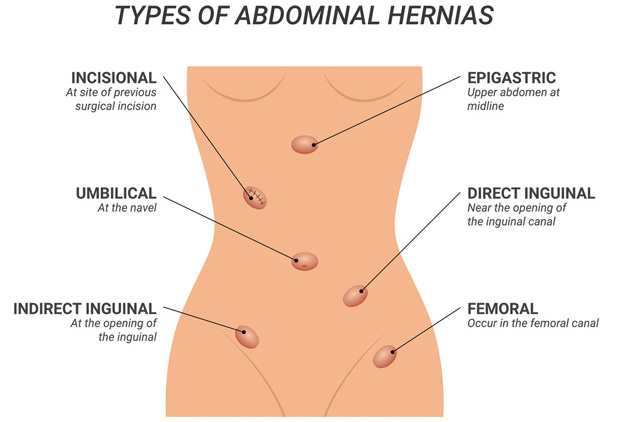
Hernias can be more than a pain in the side.
People of many different ages can develop hernias. A hernia is when an internal organ or tissue bulges through an abnormal opening in the body, such as a hole or weakness in the abdominal wall. Hernias can occur in various parts of your body but are commonly found in the navel, the groin, or anywhere you have had a surgical incision. Often the hernia creates a bulge you can see and feel. Hernias are generally painful and can sometimes damage your internal organs.
Some hernias are present at birth; others develop slowly over a period of months or years. Hernias can also come on quite suddenly. Experiencing an unusual or painful bulge in the affected area is the most commonly reported symptom. Some patients also report discomfort in the abdomen and swelling in the groin that worsens with activity. Though, you could have more subtle symptoms as well – including dull aches and pains. Hernia surgery is often relatively low-risk. Many hernias require the placement of mesh in order to reinforce the weakness in the abdominal wall, which lessens the chance for the hernia to come back.
If you experience a heavy feeling in your abdomen when you bend, pain when you lift heavy objects or a lump that enlarged when you strain and disappears when you lie down, it could be a hernia. Having it treated will ease your discomfort, as well as prevent the hernia from damaging internal organs.
